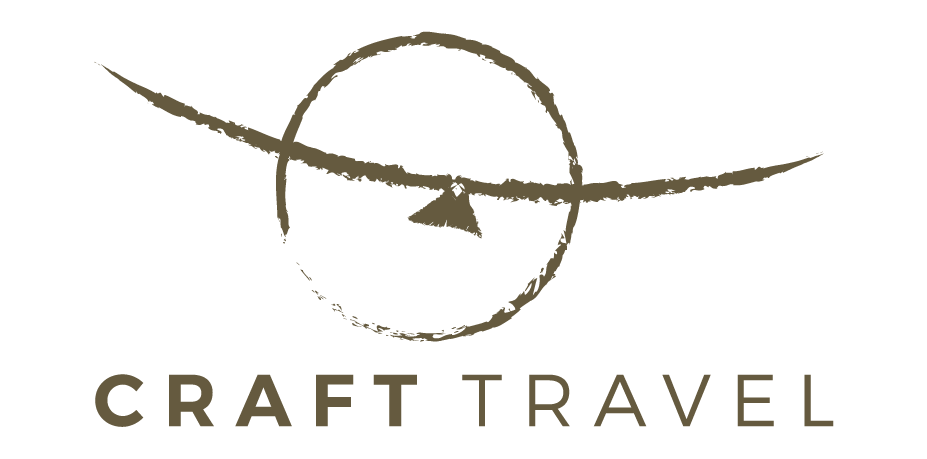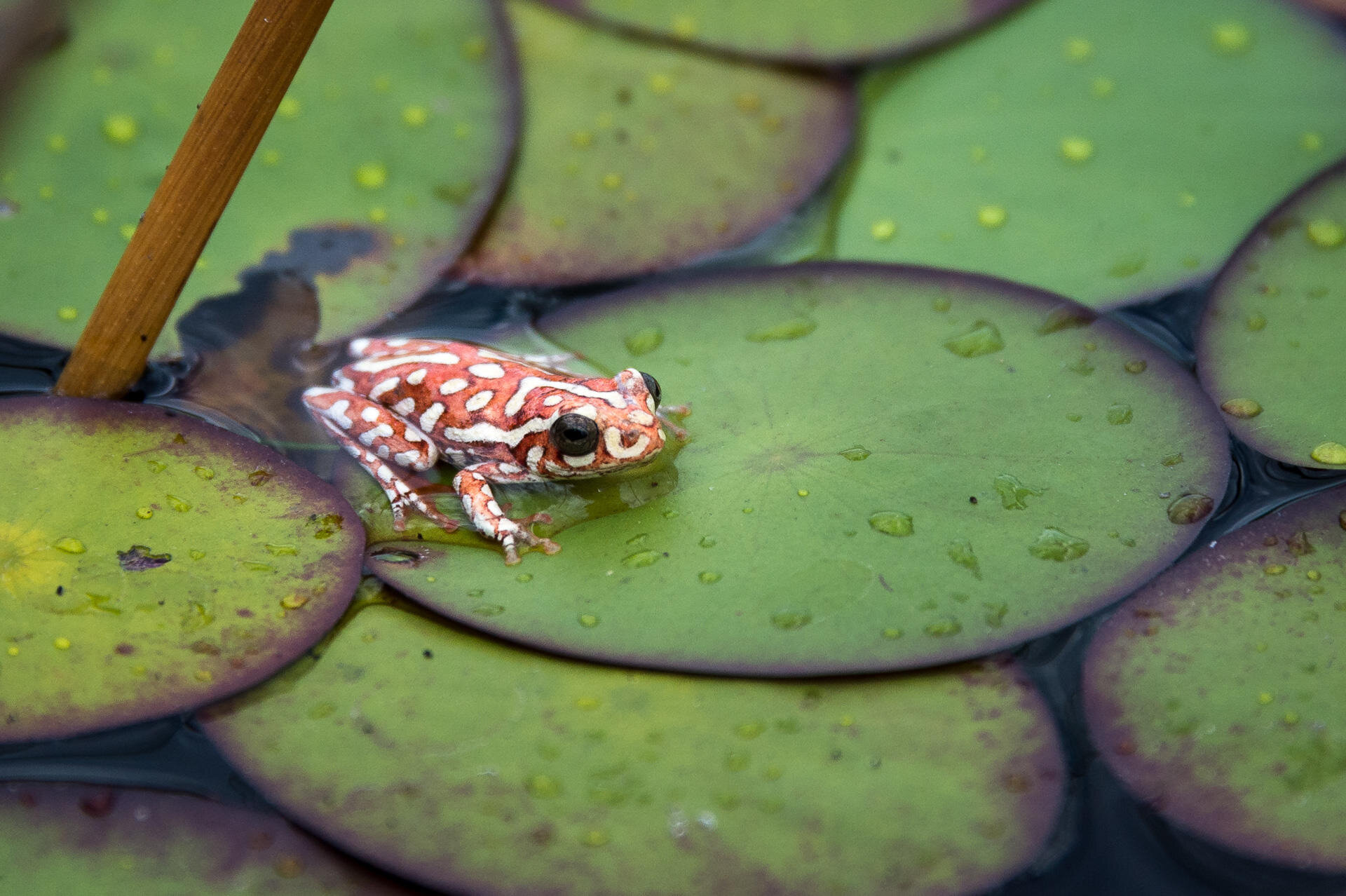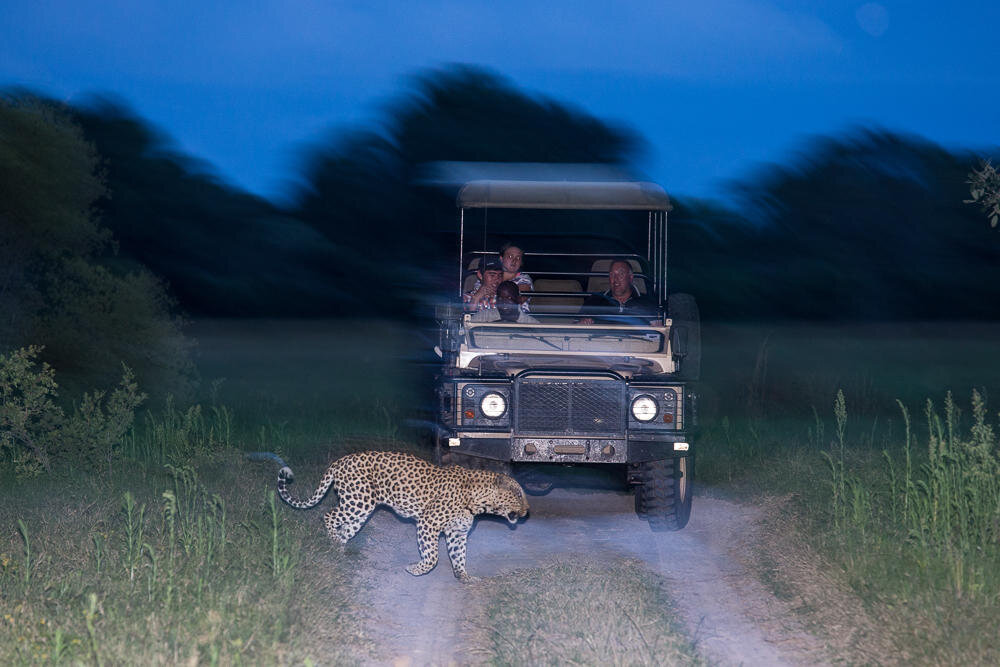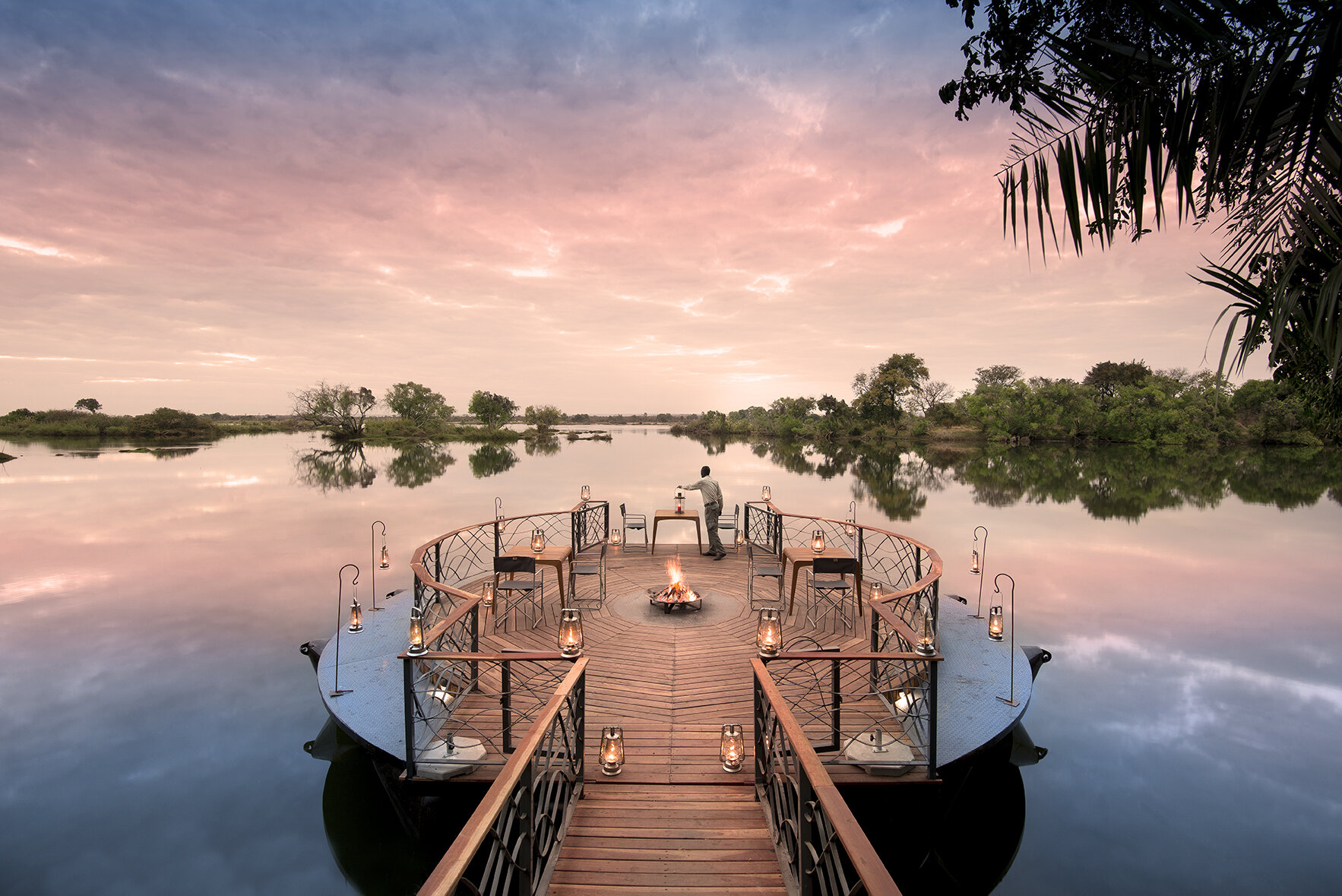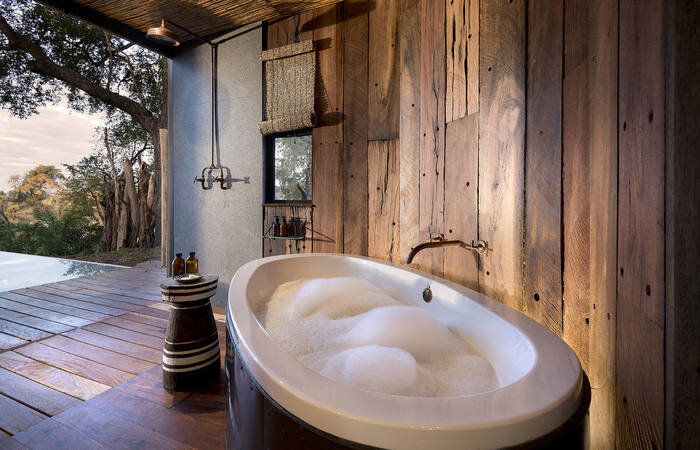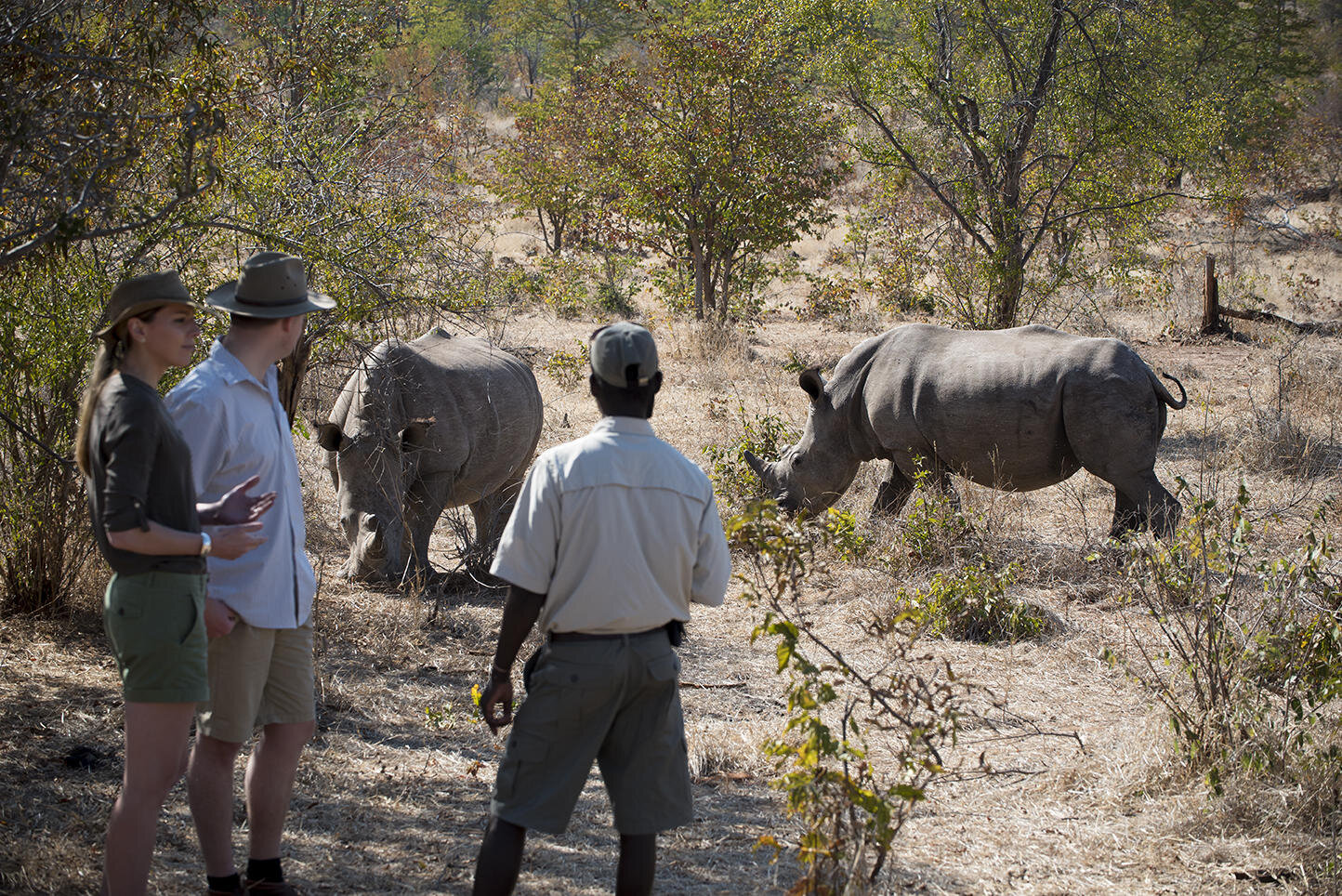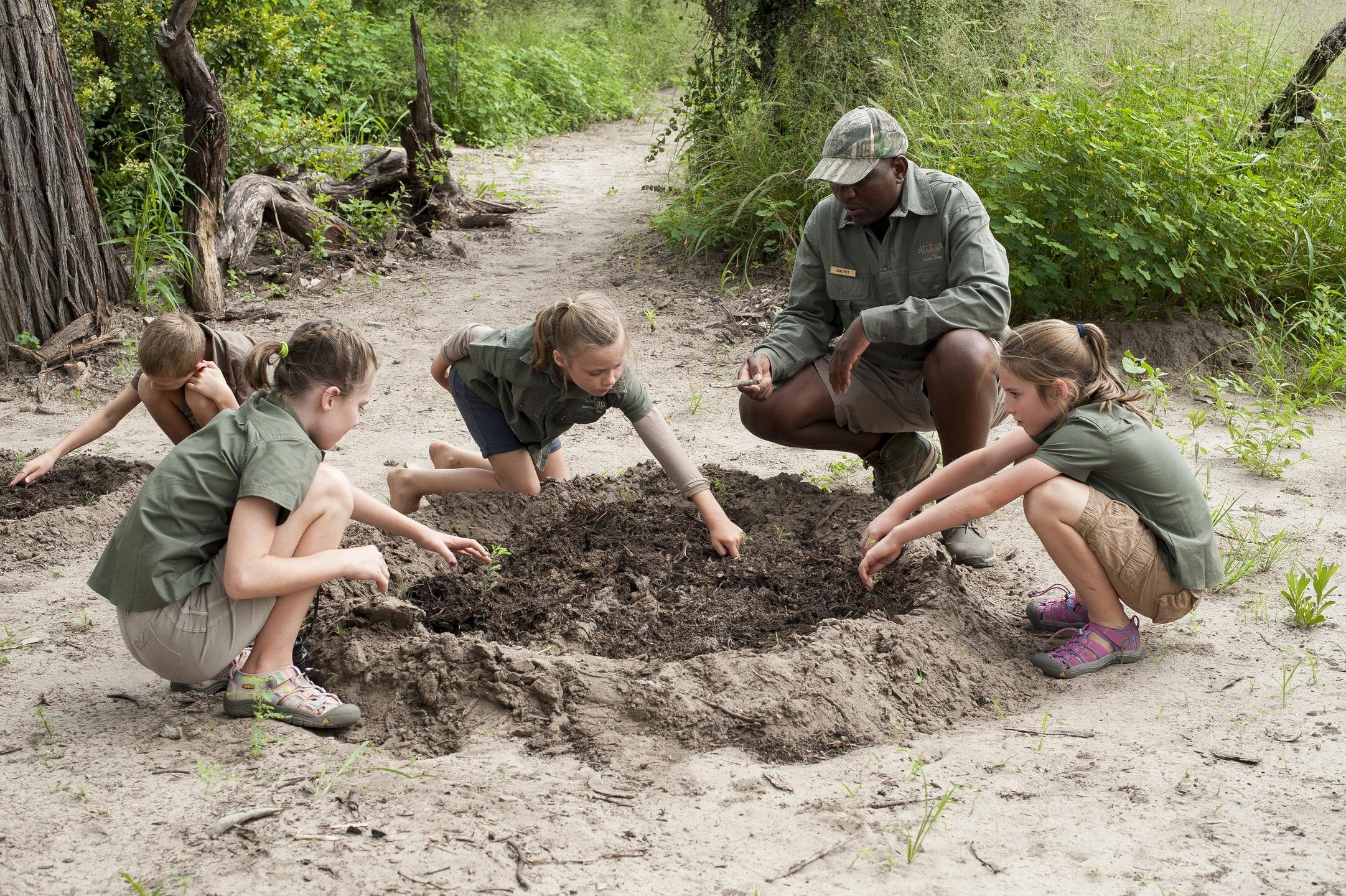Green Season Safari
10 days / 9 nights
Take advantage of Botswana’s unique highlights during the less traveled green season. Witness the great zebra migration of the Kalahari and Makgadikgadi Pans, discover the Big Five and beyond in the lush northern sector of the Okavango Delta and embark on countless adventures in Victoria Falls.
Itinerary Highlights
When conducting preliminary research for a safari, it’s not unusual to ask, “When is the best time of year to go?” Countless resources will tell you that Southern Africa’s prime safari months are during its dry winter season, generally spanning from June through early October, as lack of rainfall forces animals to congregate at a handful of water sources, resulting in easier spotting. We certainly agree with this assessment, but those looking for a more unique experience should consider the “emerald” season from December through March, when green colors come alive, tourists disappear, birds abound and some of the region’s most magical phenomena occur. Botswana is home to the Great Zebra Migration, the longest migration of any land mammal in Africa. Tens of thousands of zebra, along with wildebeest, head north from the Kalahari Desert into the Makgadikgadi Pans on a seasonal journey in search of grassy plains. With them come the region’s fiercest predators, such as the Brown hyaena and lion.
Situated northwest of the Makgadikgadi Pans, the Okavango Delta is one of the world’s most recognizable and desirable destinations for safari. As the name suggests, the Delta’s wilderness is inextricably linked to its complex water systems, as rain waters from Angola’s highlands make an annual appearance in Okavango just in time for the dry season, flooding the nutrient-dense plains to create one of the most spectacular wildlife regions on earth. Yet prior to the floods that begin to arrive in April, the Okavango Delta is no less spectacular, particularly in a handful of areas where water sources remain abundant. Predators are still there, birding is at its best and photography conditions are unmatched. The best part of all? Lodge pricing is often close to half the cost of peak season rates, even in Botswana’s most exclusive camps.
Green Season Safari takes advantage of these conditions with an unforgettable pairing of two of Botswana’s most exceptional lodges, both ideal for the summer months. The itinerary begins at iconic Jack’s Camp, situated on a one million acre private wildlife reserve in the Makgadikgadi Pans with just nine decadent tents, fit for royalty. Meet habituated meerkat (endemic to the region), walk with the local Bushmen, embark on night safari and horseback ride through the desert. Make your way to the northern region of the Okavango Delta to Little Vumbura, arguably one of the best private concessions in the country. With just six tents, Little Vumbura is situated on a wooded island and accessible only by boat, the epitome of island living in the midst of the Delta. Water-based activities are a focus, with mokoro and boats plying the channels. Wildlife viewing and birding is consistently good all year round via game drives through the savannah areas and walks around the islands.
End your adventure with a stay in Victoria Falls, a magnificent destination year-round and particularly lovely in the later summer months as waters begin to rise. Beautifully designed Thorntree River Lodge graces the banks of Zambia’s glorious Zambezi River in Mosi-Oa-Tunya National Park. Find perfect respite after a week of intense safari by relaxing in the infinity pool that seamlessly blends into the river horizon, or at your own private plunge pool overlooking the Mighty Zambezi. Continue wildlife exploration inside the national park as you embark on rhino tracking. Visit both Zambian and Zimbabwean sides and see ‘The Smoke Which Thunders’ from above with an unforgettable helicopter tour above the Falls.
Lodges described in the itinerary are recommended by Craft Travel but there are numerous options in each destination and we will customize your itinerary based upon your preferences. With your feedback, we will similarly customize suggested activities, time spent in each location and trip extensions to additional destinations of interest nearby.
See “Expert Notes & Customization” section below.
Daily Itinerary
Day 1: Arrival to Makgadikgadi Pans
Arrive at Jack’s Camp, pitched on a low grassland knoll amongst an oasis of dignified desert palms and Kalahari acacia. The camp’s hub is a romantic canvas pavilion of low spires and finials with a fluttering valance beneath its eaves and could be the site for a medieval jousting tourney were it not a deciduous green. Three poles support the main chamber where everyone meets for meals at a long communal dining table.Ten green roomy and stylish canvas tents with en-suite bathrooms, indoor and outdoor showers (for those who want to feel the Kalahari breeze on their skin)have been fashioned in classical 1940’s style creating an oasis of civilization in what can be the harshest of stark environments. Persian rugs underfoot, cool cotton sheets and mahogany and brass campaign-style kit from the family safari stores form a striking contrast with the rugged wilderness viewed from the comfort of one.
After settling in to your tent, join your guide for tea before driving into the grasslands and the beautiful evening light. Stop to watch the sun set and listen to an explanation of how the Makgadikgadi pans,the remnants of the world’s largest ever super-lake, were formed.Return to camp for a lavish dinner in the elegant mess tent, a designated national museum of Botswana.
Overnight at Jack’s Camp (Lunch & Dinner)
Day 2: Meerkat Habitutation Program & Brown Hyena Spotting
Set off in the morning to visit some of the Kalahari’s most fascinating inhabitants, the meerkats. As a meerkat’s wake up time is weather dependent, breakfast might be enjoyed in camp on cooler and rainy days, or as a picnic on warmer, sunnier days
Due to an ongoing habituation program, it’s possible for you to get up close and personal with these captivating creatures. Remember, they are not tame – just used to our non-threatening presence. On chilly mornings, you might well find a meerkat snuggling up to you for warmth, or in the absence of a termite mound or tree, using your head as a sentry lookout post. By spending quality time with these incredibly social, superbly adapted animals, you will be able to see how they interact with each other and their environment. You also get the chance to see
the desert through the eyes of a meerkat - which, despite the fact that it’s only a foot off the ground, is a pretty spectacular vantage point, and definitely one of the most special and memorable game experiences you will encounter in Botswana. Leave the meerkats as they continue with their eternal foraging and head to the site of the famous Chapman’s Baobab (also known as the Seven Sisters) which was acknowledged to be the third largest tree in Africa until it recently fell to the ground. This was once the campsite of early explorers like Livingstone and Selous when they pioneered the area and a visit here gives you an opportunity to gain a fascinating insight into the history of the early explorers.
Return to camp for a rest and refreshing lunch. Jack’s Camp is renowned throughout the industry for menus that emphasize fresh tastes and originality.
Teas are indulgent affairs with treats like molasses scones with watermelon and rose petal jam & cream, lemon meringue tarts and the best brownies in the bush!All bread is baked daily, and full cooked English breakfasts are on offer every morning. After tea, head off in search of some unique desert species such as aardvark,bat eared foxes, aardwolves, and the elusive brown hyaena, which is the third rarest large carnivore in Africa, with only about 8,000 in the wild. Brown Hyaenas are the consummate desert specialists, surviving in arid areas where both food and water are scarce.A timid, nocturnal species rarely seen by humans, but in spite of being solitary foragers, they are very social animals, living in clans of up to 10-12 hyaenas. Enjoy an evening game drive back to camp for a lavish dinner.
Overnight at Jack’s Camp (Breakfast, Lunch & Dinner)
Day 3: Zebra Migration & Large Predators
Wake up to a delicious breakfast before heading off in search of the zebra and wildebeest migration. As the migration is constantly moving, sometimes you need go no further than the veranda of your very own tent to see hundreds of zebra,and on other days the search could take you into the Makgadikgadi National Park and beyond. In the Kalahari Desert rain is the ‘currency of life’ and it is incredible to see how, as soon as the rains arrive, the desert transforms into a green oasis teeming with life. Within days of the first rain, thousands of Burchell’s zebra and blue wildebeest make their way across the Makgadikgadi National Park to feed on the sweet summer grasses, and benefit from the high mineral content found in the salt pans. Until recently it was thought that the zebra and wildebeest came from the Boteti River, but new research has shown that some of the zebras come from as far away as the Southern parts of the Okavango Delta.The route to the Makgadikgadi from the southern delta is no easy trot and this new data has emphasized just how incredibly important the Makgadikgadi area is to these animals.While enjoying a picnic lunch in the shade of a grove of trees, you will see the awe-inspiring spectacle of the last surviving zebra and wildebeest migration in Southern Africa. This is the second largest migration of African ungulates, with an estimated 30,000 animals, the majority being zebra, participating each year.
Close behind the zebra and wildebeest are the predators, and it is during the rainy season that you might encounter lion, cheetah and, sometimes, even leopard or wild dog. Resident all year round are the rare brown hyaena, which do not hunt, but mainly scavenge, these fascinating and somewhat misunderstood animals benefit hugely from the arrival of the migration. Also benefiting from this influx of life are the many birds of prey and vultures.The bird life in the Makgadikgadi is as fascinating as the animals and you are sure to spot some unique desert birds,such as ostrich and sand grouse as well as the water birds, which arrive with the rains. Waders, ibis, ducks, geese, storks, as well as the rare wattled crane can be seen during this time, and towards the end of the season, flamingos, can be seen resting on the pans before continuing on their migration. Your guide will explain in great detail how mammals evolved;this process having been shaped by the complex but fascinating relationship between predator and prey. The origins of hunting and water sourcing and its influence on man’s development will also be explained. Your guides are specialists and are able to convey all the nuances of the desert and the clever adaptations of its inhabitants that we consider one of the most interesting features of the environment. Return to camp after a jam-packed day for hot showers, and a delicious dinner.
Overnight at Jack’s Camp (Breakfast, Lunch & Dinner)
Day 4: Walking with the Bushmen & Departure to Okavango Delta
Spend the morning walking with the Zu/’hoasi Bushmen. We passionately support cultural tourism in Botswana. It has long been our belief that it is a vitally important tool in terms of preserving this unique, but sadly fast-vanishing, culture. Jack’s Camp has been working closely with the Zu/’hoasi people of the Western Kalahari for many years and are privileged to have 24 Bushmen women, men and preschool children comprised of four generations, living at Jack’s Camp in the Makgadikgadi. Offering a window into the past, they teach us how they have survived in this harshest of environments, using their vast and ancient knowledge of plants,animal behavior and survival skills. The Zu/’hoasi lead a semi-traditional lifestyle, and share their traditional hunting and food-gathering skills as well as how they make jewelry and hunting equipment, it is a glimpse into their traditional way of life, but by no means an attempt to keep them frozen in time. Through Jack’s Camp’s initiative, a community is able to work together and share their knowledge with each other and guests, allowing the older generation to pass the knowledge onto the next generation. The young children are the future and we hope that they carry the knowledge and traditions of their incredible ancient culture into the modern world with a sense of pride and personal empowerment.
After breakfast, walk through the bush to the traditionally built Bushmen village,where the community gathers during the day. The huts provide shelter from the harsh Kalahari environment, but are not the community’s permanent accommodation. On arrival, the elders of the community will meet you in a traditional manner after which you will walk out into the bush with the men, women and children. The focus of the walk will be to provide a gentle introduction to the Kalahari and Bushmen way of life. The group will point out the distinct ecological characteristics of this area and its animal and bird species. Spontaneous gathering and discussions about the uses of plants and wildlife by your Bushmen Guides provide the link between culture and wild environment that we seek to offer guests.
For those who would prefer to spend a little less time exploring and a little more time lounging – Jack’s Camp is perfectly adapted. Time for one more delectable lunch before you bid farewell to Jack’s Camp in preparation for your onward journey to the Okavango Delta.
Fly on your light aircraft toward the Delta your onward circuit air transfer to Little Vumbura. Little Vumbura is situated on a beautiful island in a private concession in the northern reaches of the Okavango Delta in Botswana. Surrounded as it is by water and lying close to large rivers, both water- and land-based activities are as central to the overall experience, with both offering spectacular and diverse wildlife sightings. Little Vumbura’s private concession within the Delta is considered one of the best for sighting during the green season between December and March.
Little Vumbura is a beautiful six-roomed tented camp shaded by the canopy of an ancient forest. Each well-appointed tent has en-suite facilities and a deck with incredible vistas. A plunge pool and reading area overlook the floodplains while a star deck is reached by a bridge from the dining area.
In addition to helping to conserve the area, Little Vumbura is part of a community participation plan that brings the benefits of ecotourism to the communities that live around the Okavango Delta.
The annually flooded grasslands of the Okavango Delta surrounding Vumbura Plains are locally referred to as 'melapo' and offer good seasonal viewing of elephant, giraffe, impala, sable antelope, kudu, zebra, common waterbuck and reedbuck, tsessebe, wildebeest, red lechwe and Cape buffalo. Hippo and crocodile are common in the waterways. Predators include the African wild dog, several resident prides of lion, as well as leopard, cheetah and African wildcat. Birding is exceptional all year round.
Overnight at Little Vumbura (Breakfast, Lunch & Dinner)
Day 5: Classic Big Five Safari
Little Vumbura’s game drives may be some of the most thrilling in all of the Delta. This particular concession boasts various habitats with an especially varied range of permanently available water channels. Such distinction ensures exceptional conditions for wildlife viewing year-round. You’ll explore these multiple habitats from your 4x4 safari-fitted vehicle, driving between woodland, grasslands and even some flooded areas as you follow the wildlife. Classic driving safari is often the best method for spotting game in the bush as the animals, largely accustomed to the the vehicles and will have few qualms about approaching you (as your armed guide looks on closely, of course).
Be prepared to encounter a wide range of predators, including lions, leopards and cheetahs. Other animals include elephants, buffaloes, zebras, giraffes, baboons, warthogs, kudus, impalas, sables, roans, reedbucks, bushbucks and lechwes.
Before, during and after your game drives, the camp’s exceptional service will shine, from breakfasts in the bush to sundowners overlooking the majestic Southern African plains as you sip on G&Ts.
Overnight at Little Vumbura (Breakfast, Lunch & Dinner)
Day 6: Water-Based Safari
Depending on conditions or your viewing preferences, you may prefer to spend another day focused on game drives in your vehicle with your guide. But here at Little Vumbura you’ll also have the chance to take to the channels to enjoy the Delta's unique water-based activities.
Mokoro canoe safari is a wonderful way to explore these beautiful wetlands, providing guests the opportunity to appreciate both the extraordinary scenery and smaller elements of wilderness often missed from a game vehicle. The original mokoros were hollowed tree trunks but these days are made from fiberglass in an attempt to conserve the resources of the woodlands. Each canoe accommodates two seated guests, with a guide standing behind and providing propulsion by means of a long pole. Your guide will acclimate you to your surroundings, introducing you to the more fascinating discoveries to be made from the water.
While the makoro ride is best suited to the winter months of July - September once the main plains are flooded, Little Vumbura is one of the few camps in the Delta that can offer the experience year round (weather permitting, of course) thanks to a network of deep water channels.
Motorboat safari may not provide the same tranquility as a motorless mokoro but the experience does give you the chance to cover greater distances where you'll be able to find increased wildlife, and approach it more safely.
Motorboat safari can produce excellent interactions with hippos, crocodiles, swimming elephants, antelopes including lechwe and sitatunga, plus lots of birds. When done in the afternoon, these trips often culminate in scenic sundowner drinks at a remote location.
Overnight at Little Vumbura (Breakfast, Lunch & Dinner)
Day 7: Departure to Livingstone (Victoria Falls)
At the scheduled time you'll depart the Vumbura Airstrip and head toward Kasane Airport for your quick flight to Livingstone. Upon arrival at the airport, you’ll be met by your guide and transferred to your nearby lodge, directly on the mighty Zambezi River. You’ll then meet your lodge your host who will provide you with a brief orientation.
Set in Zambia’s Mosi-Oa- Tunya National Park, Thorntree River Lodge just a short distance from epic Victoria Falls, known locally as ‘The Smoke that Thunders’. Thorntree was recently completely rebuilt with a wholy environmentally-conscious design. Drawing inspiration from local customs and culture, the lodge showcases a modern contemporary design with tented roof structures to maintain the feel of authentic Africa. Each of its 10 chalets boasts its own indoor and outdoor bathrooms and luxury private plunge pools overlooking the Zambezi.
Enjoy the rest of your evening at leisure, taking advantage of your private plunge pool, the lodge's more expansive lap pool or the spa.
Overnight at Thorntree River Lodge (Breakfast, Lunch & Dinner)
Day 8: Victoria Falls in Zimbabwe and Zambia
Today you'll venture to the nearby border with Zimbabwe and head into the town of Victoria Falls where you'll begin your exploration of the National Park with a guide. Spend several hours experiencing the splendor of these incredible waterfalls. You’ll also discover the Zambian side of the Falls on your return to the lodge.
We suggest a helicopter tour of the Zimbabwean side of the Falls at an additional (but surprisingly inexpensive) charge or, depending on the water levels, a swim in the iconic Devil's Pool! Other activities inside the national park like zip lining or hiking can also be arranged. Days and nights at Thorntree are fully flexible.
Head out for sunset on one of Thorntree’s private boats for a spectacular sundowner on the Mighty Zambezi.
Overnight at Thorntree River Lodge (Breakfast, Lunch & Dinner)
Day 9: Rhino Tracking in Mosi-oa-Tunya National Park
Enjoy a second day in the Victoria Falls region. Today we suggest focusing on activities on the Zambian side, particularly those offered on site at Thorntree.
Situated within Mosi-oa- Tunya National Park, Thorntree offers the opportunity for rhino tracking. The park is home to the extremely rare and endangered White rhino who are under the 24-hour protection of rangers. Embark on a bush walk to experience these stunning creatures in the most exhilarating manner possible. You can also enjoy your final game drives of the trip here in the national park.
Choose from other included activities such as a visit to the Livingstone Museum, canoe trips with picnic lunch, visit to Maramba and Makuni Markets or catch and release shore fishing.
Overnight at Thorntree River Lodge (Breakfast, Lunch & Dinner)
Day 10: Departing Flight Home
At the scheduled time, you will depart the lodge with your driver and head toward the Livingstone Airport (LVI) for your next destination. Transfers to Victoria Falls Airport (VFA) can also be arranged.
(Breakfast)
What's Included
9 nights accommodation based on double/twin occupancy
All meals and drinks, wines and liquors (excluding French champagne)
All internal flights
English speaking naturalist guides with twice daily game drives
Additional guided activities at lodges (walking safari, mokoro, fishing, etc) as described
All airport and ground transportation
All conservancy and national park fees
Daily laundry
*Not included: gratuities, visas (if applicable), international flights, meals and drinks not described above, items of a personal nature
Expert Notes & Customization
All three camps included are some of the most exclusive in their regions, particularly Jack’s Camp and Little Vumbura. For a more affordable itinerary, lodges like Camp Kalahari (Jack’s sister property) can be considered in Makgadikgadi. In the Delta, many properties within the Moremi Concession would provide good green season conditions as well. For those looking for a more adventurous feel during the green season (and beyond), we strongly recommend our Tented Expeditions in Botswana itinerary. All travelers must be over the age of 16.
This itinerary can be done throughout the year, with the more traditional dry season months providing exceptional classic safari. During the dry season, Jack’s other sister camp, San Camp, is also fantastic.
